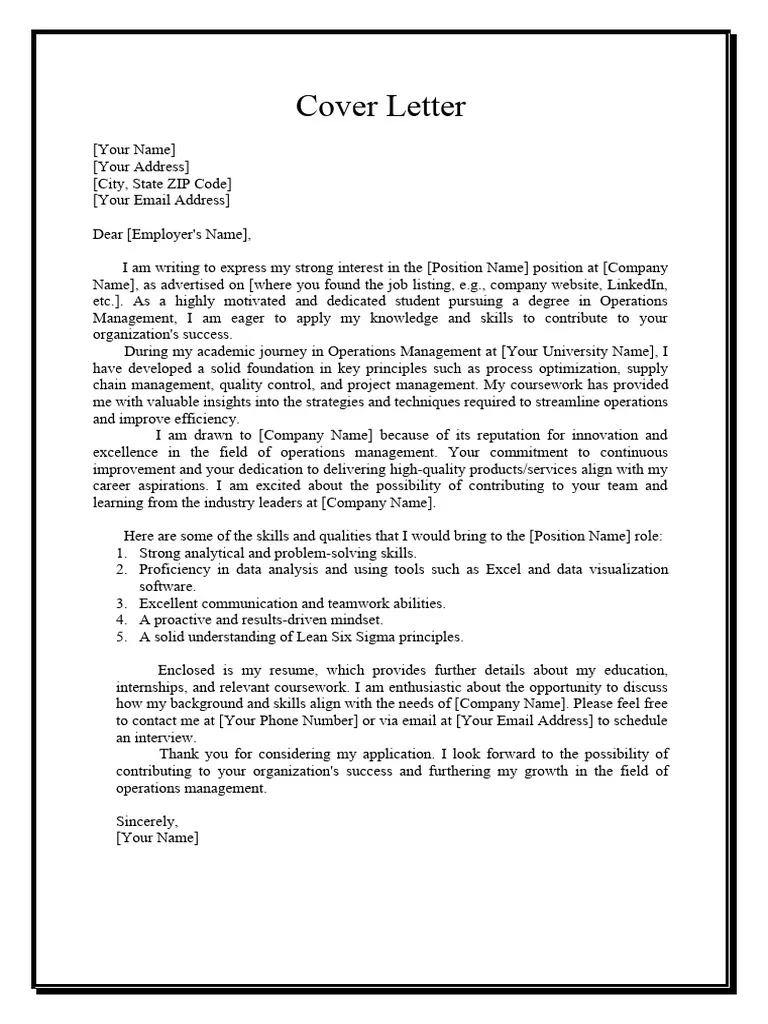Cover Letter Format
A well-formatted cover letter is your first step toward making a positive impression on potential employers. It serves as a crucial introduction, giving you the opportunity to showcase your personality, skills, and enthusiasm for the position. The format you choose, including the file type and layout, plays a vital role in how your application is received. This guide will provide you with all the information you need to create a compelling cover letter that effectively communicates your qualifications and increases your chances of landing an interview. By paying close attention to every detail, you can significantly increase your chances of standing out from the competition.
Choosing the Right PDF Format
Selecting the right file format is essential for ensuring your cover letter is displayed correctly and professionally. PDF (Portable Document Format) is the universally recommended format for cover letters. It preserves the formatting, fonts, and layout of your document, regardless of the recipient’s operating system or software. Using a PDF ensures that your cover letter appears exactly as you intended it, preventing any potential issues with compatibility or unintentional alterations. It is a key aspect of a professional presentation and increases the impact of your job application.
Why PDF is Preferred
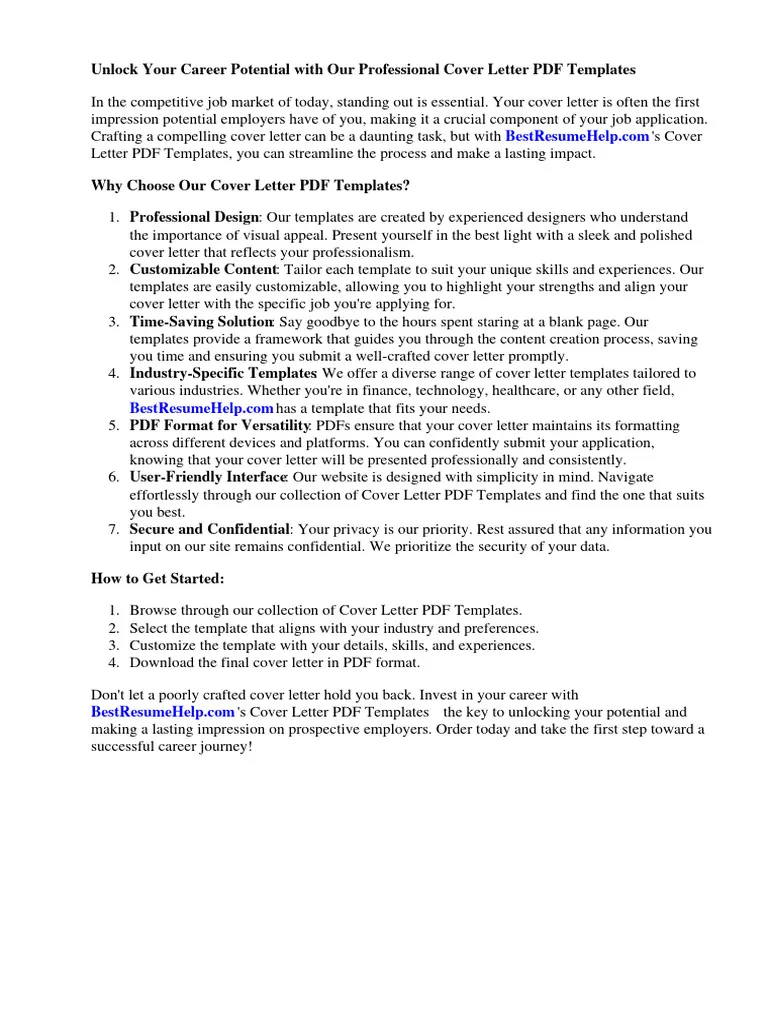
PDFs are preferred for several compelling reasons. Firstly, they are easily accessible across all devices, from computers to smartphones, ensuring that hiring managers can view your document without any compatibility problems. Secondly, PDFs maintain the original formatting, which means the carefully chosen fonts, spacing, and layout you created remain intact. Thirdly, PDFs are widely regarded as a secure format; they are difficult to alter, ensuring that your cover letter’s integrity is protected. Finally, many applicant tracking systems (ATS) can easily process PDF files, making it easier for your application to pass through the initial screening process.
When to Use Other Formats
Although PDF is almost always the best choice, there might be rare situations where other formats are acceptable, although discouraged. If a job posting specifically requests a different format, such as a Word document (DOC or DOCX), you should comply with the instructions. However, in the absence of specific instructions, always default to PDF. Word documents can sometimes be preferable for collaborative editing, but typically, only the applicant will need to make changes to a cover letter. Always save your cover letter as a PDF before submitting it to maintain its format and ensure that it looks professional.
Essential Cover Letter Elements
A well-structured cover letter consists of several essential elements that work together to present a compelling case for why you are the right fit for the job. These elements, including your contact information, the recipient’s address, a tailored body, and a professional closing, help to create a complete and convincing representation of your skills and experiences. Including all of these elements allows you to create a strong impression that sets you apart from other candidates and convinces the hiring manager of your capabilities and suitability for the role.
Header and Contact Information
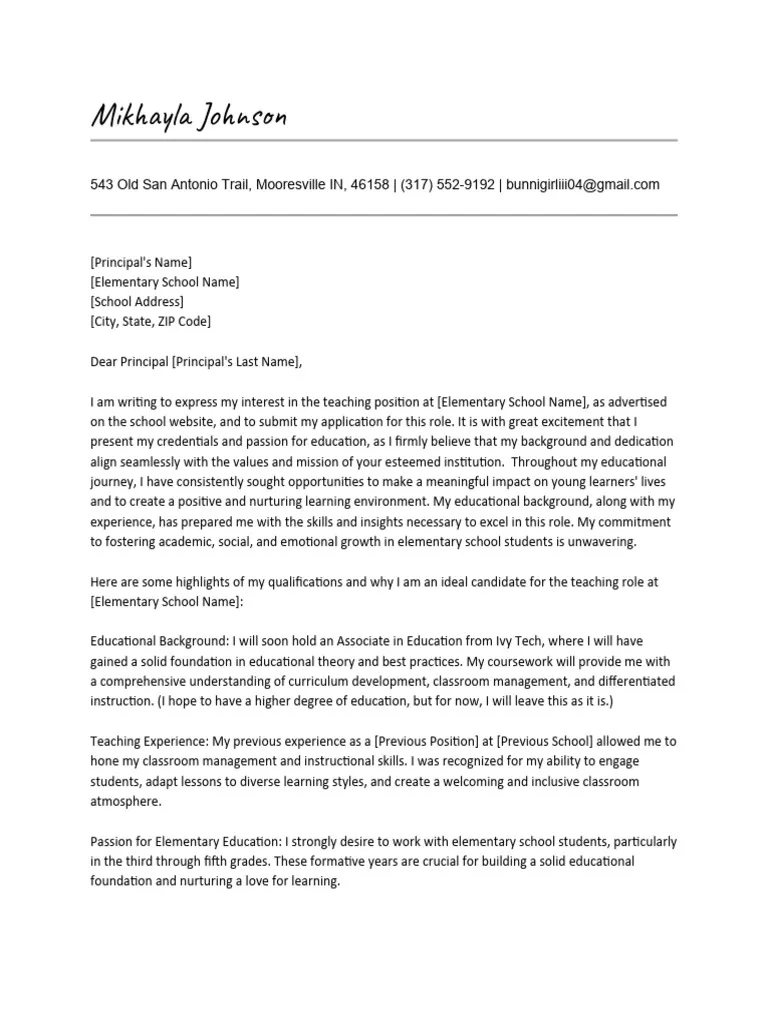
The header is the first thing a hiring manager sees, so it must be clear and professional. It should include your full name, address, phone number, and email address. Ensure that your email address is professional; avoid using nicknames or unprofessional language. The header provides the employer with immediate access to your contact information, making it easy for them to reach you. Correct and complete information demonstrates your attention to detail and professionalism.
Formatting the Header
The header’s format should be consistent and easy to read. A common approach is to place your name at the top, followed by your contact information. You can align your contact information to the left or right, but maintain consistency throughout. Avoid using a header that takes up too much space on the page, as this can detract from the body of the letter. Ensure the font and size match the rest of your cover letter to maintain a polished appearance. The overall goal is to make it simple for the hiring manager to contact you.
Recipient’s Address
Below your contact information, include the recipient’s address. This shows that you’ve researched the company and are addressing the letter to a specific individual. If possible, address the letter to the hiring manager or the person listed in the job posting. If you cannot determine the hiring manager’s name, address the letter to the hiring team or use a general salutation like ‘Dear Hiring Manager.’ This personalized touch shows that you’ve put extra effort into your application and increases the chances of getting noticed.
Salutation and Tone
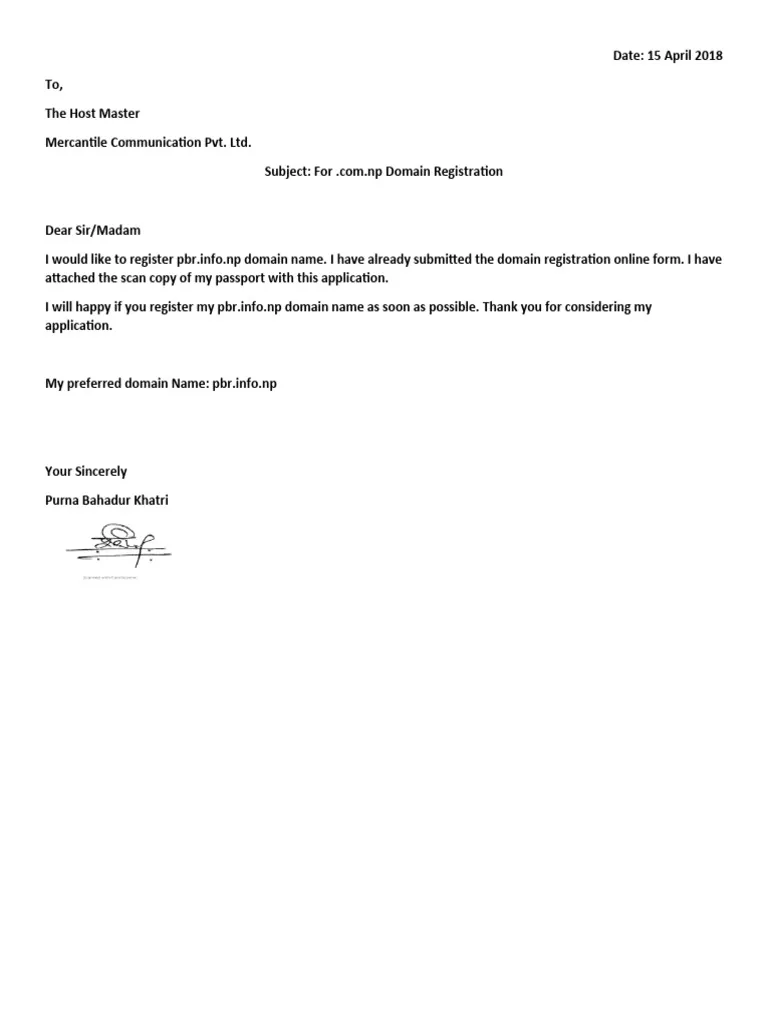
The salutation sets the tone for your cover letter. ‘Dear Mr./Ms./Mx. [Last Name]’ is a professional and respectful option. If you don’t know the recipient’s name, ‘Dear Hiring Manager’ is acceptable. The tone of your cover letter should be professional, enthusiastic, and aligned with the company culture. Use language that demonstrates your understanding of the role and the company’s needs. Maintain a positive and confident tone throughout your letter, reflecting your personality and suitability for the position.
Body of the Cover Letter
The body of your cover letter is the heart of your application. It allows you to expand on your qualifications, highlight your relevant skills, and demonstrate why you are the ideal candidate. This section is your opportunity to make a strong case for yourself, showcasing your value and demonstrating how you can contribute to the company’s success. The body should be tailored to the specific job and company, ensuring you address the key requirements and express your enthusiasm for the role.
Opening Paragraph
Start with a compelling opening that grabs the hiring manager’s attention. State the position you’re applying for and how you found the job. Briefly mention why you are interested in the role and the company. The opening paragraph should be concise and engaging, providing a quick overview of your motivation and your suitability for the position. This sets the tone for the rest of the letter and encourages the reader to continue reading, increasing your chances of getting your application seriously considered.
Highlighting Skills and Experience
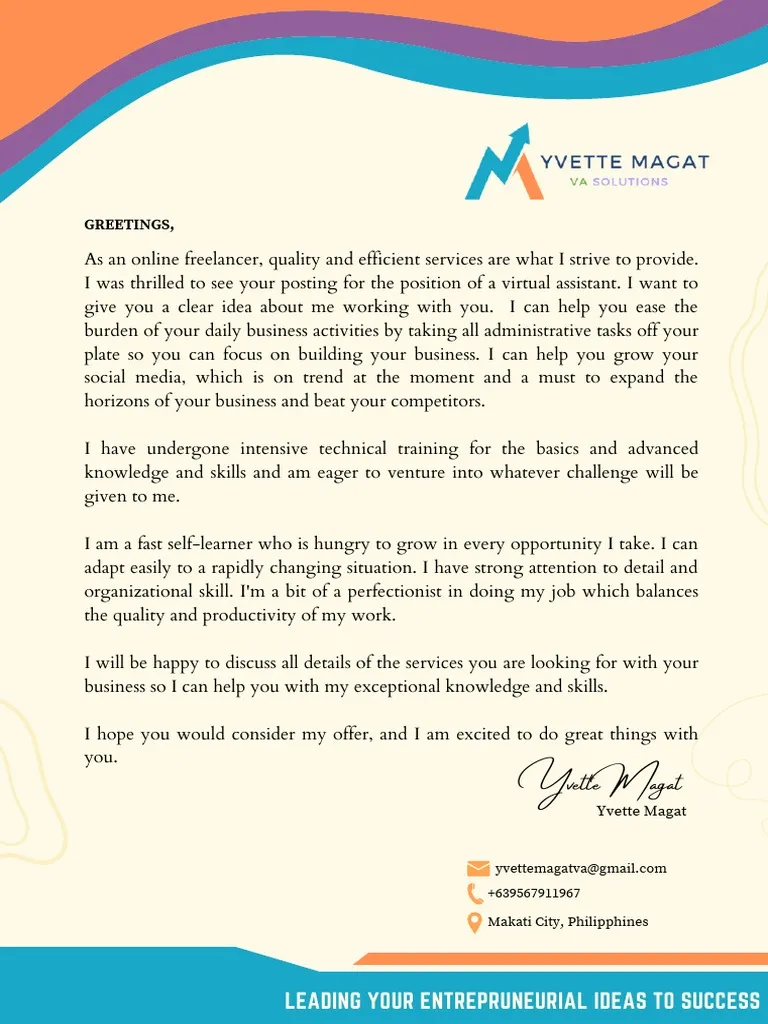
In the following paragraphs, highlight your skills and experience that are most relevant to the job requirements. Focus on specific examples from your previous roles that demonstrate your abilities. Use the job description as a guide to identify the key skills and qualifications the employer is seeking. Tailor your descriptions to match the requirements, providing concrete examples of how you have used your skills and the results you achieved. This helps the hiring manager understand your capabilities and how they align with the needs of the role.
Quantifying Achievements
Whenever possible, quantify your achievements. Use numbers and data to show the impact of your work. For example, instead of saying ‘Managed social media campaigns,’ say ‘Increased social media engagement by 30% within six months.’ Quantifiable achievements make your accomplishments more concrete and demonstrate your value to the company. Providing specific metrics adds credibility to your claims and helps the hiring manager understand the value you can bring to the role.
Tailoring to the Job Description
Customize your cover letter for each job application by carefully reviewing the job description. Identify the key requirements and align your skills and experiences with those requirements. Avoid sending generic cover letters; instead, demonstrate that you understand the role and the company’s needs. By tailoring your cover letter, you show that you have taken the time to consider the specific requirements of the role. This helps the hiring manager understand your potential to succeed in the position.
Closing the Cover Letter
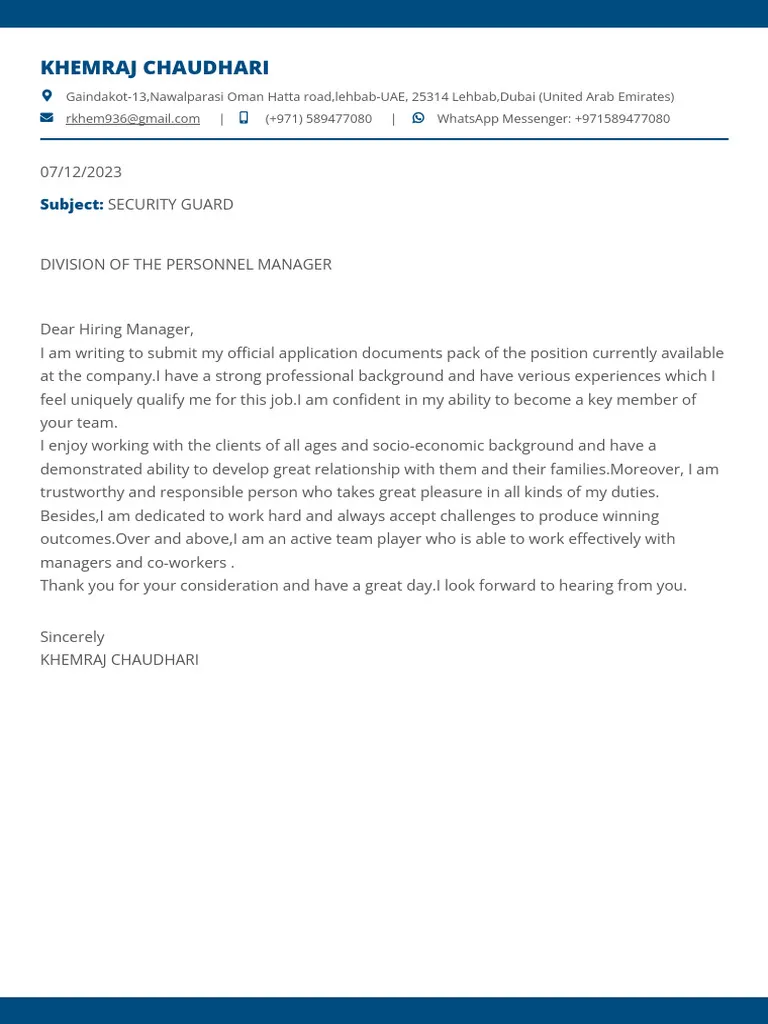
The closing paragraph of your cover letter should reiterate your interest in the role and express your enthusiasm for the opportunity. Include a call to action, such as requesting an interview or offering to provide additional information. This section should be professional and concise, leaving a lasting positive impression. It is your final chance to reinforce your interest and encourage the hiring manager to take the next step in the hiring process. It reinforces your suitability for the role and indicates a willingness to engage further.
Formal Closing and Signature
Use a formal closing such as ‘Sincerely,’ ‘Best regards,’ or ‘Thank you for your consideration.’ Leave space for your handwritten signature if you are printing and mailing the letter, or simply type your name below the closing. A professional closing completes your cover letter and conveys respect. This is your final opportunity to reinforce a positive impression, and it should be appropriate for the tone of your letter and the company’s culture. This demonstrates your attention to detail and professionalism.
Proofreading and Editing
Before submitting your cover letter, carefully proofread and edit it. Check for grammar, spelling, and punctuation errors. Have a friend, family member, or career counselor review your letter to catch any mistakes you may have missed. Errors can detract from your credibility and make a negative impression. Proofreading is a critical step in ensuring that your cover letter is polished and professional. This final step ensures that your message is conveyed clearly and that you are presented in the best possible light.
Cover Letter Length and Layout

A well-designed layout and appropriate length are critical to creating a cover letter that is easy to read and effectively communicates your qualifications. Adhering to best practices ensures that your message is received positively. The layout of your cover letter must be clear and visually appealing, which facilitates readability. The format will greatly affect how the hiring manager will perceive your application, so you need to ensure that the layout does not hinder your message.
Best Practices for Layout
Keep your cover letter concise; aim for one page, unless the job description specifically requests otherwise. Use clear headings and subheadings to break up large blocks of text and make your cover letter easy to scan. Use bullet points to highlight key skills or accomplishments. Avoid jargon or overly complex language. The goal is to make your cover letter as easy as possible for the hiring manager to read and understand. A well-organized format can enhance your application and help it stand out positively.
Font Selection and Size
Choose a professional and easy-to-read font, such as Times New Roman, Arial, or Calibri. Use a font size of 10-12 points. Avoid using unusual or overly decorative fonts, as these can be distracting. Maintain consistency in font style and size throughout your letter. A readable font will allow the hiring manager to easily absorb the information presented. Make sure it is consistent with the rest of your application to maintain a professional appearance.
Margins and Spacing
Use standard margins (1 inch on all sides) and single- or 1.15-line spacing. Ensure that the text is aligned correctly; left alignment is standard. Use adequate spacing between paragraphs to improve readability. Properly formatted margins and spacing contribute to a clean, professional appearance. Maintaining a balanced layout makes your letter more inviting and ensures that your content is easy to read. This level of care shows your commitment to attention to detail.
Final PDF Preparation
Before submitting, double-check that your cover letter is error-free and formatted correctly. Save your document as a PDF to preserve the formatting. Name your PDF file appropriately (e.g., ‘YourName_CoverLetter.pdf’) for ease of identification. Ensure the file size is appropriate for the application process. This ensures that your cover letter will display properly across different devices and operating systems. Preparing your PDF file correctly shows that you are proficient and professional.
